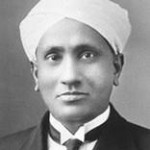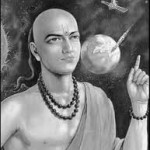The Nobel Prize is awarded to a person or a group who have made an important discovery which is useful for humanity in the fields of Chemistry, Physics, Literature, Medicine, Economics and Peace. It is awarded as a token of recognition of cultural and scientific advances with respect to innovation and contribution to human progress. No wonder, it is considered as a symbol of pride by both the people and the countries that receive them.
India and other countries
Indian track record of innovation and research performances are very poor compared to other countries. We are lagging in research oriented awards in comparison with other countries. India got only 6 research based Nobel Prizes. Whereas, developed or fast developing countries received many Nobel Prizes like Cannada-15, France-33, Germany-87, Italy-13, Japan-13, USA-286 and USSR-22. As we are discussing about science oriented Nobel Prizes, we are excluding literature and peace prizes.

Sir CV Raman
Nobel prizes of pre-independent India
India was felicitated with 2 Nobel Prizes before independence. Sir C.V. Raman received Nobel Prize for his work on the scattering of light and for the discovery of ‘Raman Effect’. He worked for Indian Finance Department under British rule in Calcutta and served as an Assistant Accountant General. Raman resigned his government service and started doing research/teaching in Physics. He was able to achieve such a major success during the British rule in India. C.V. Raman was the first Asian and first non-white to receive a Nobel Prize in the sciences.
Sir Ronald Ross was awarded Nobel Prize for his work on Malaria which was a deadly disease during those days. He was a British physician who had spent many years working in India.
Post Independence – by Indian diaspora, can we take credit?
 Even after 63 years of independence, Indian diaspora could receive only 4 Nobel Prizes. Moreover, all the 4 Nobel laureates did their research in foreign universities.
Even after 63 years of independence, Indian diaspora could receive only 4 Nobel Prizes. Moreover, all the 4 Nobel laureates did their research in foreign universities.
Hargobind Khorana was Indian-born US biochemist who is a US citizen, received Nobel prize for his work on Genes in 1968. He became a citizen of United states in 1966 and presently lives in Cambridge, Massachusetts, United States.
Subrahmanyan Chandrasekhar, nephew of Sir C.V. Raman was Indian-born U.S. Astrophysicist. He was awarded Nobel Prize for his work on theoretical structure and evolution of the stars in 1983. He became a citizen of United States in 1953 and died of heart attack in Chicago, United States.
Venkatraman Ramakrishnan, an Indian-American biochemist, received a Nobel Prize (Chemistry) for studies of the structure and function of the Ribosome in 2009. He migrated to US long back to study, where he got settled later and attained US citizenship.
Amartya Sen is an Indian born economist and philosopher. He was awarded a Nobel prize for his contributions to Welfare Economics in 1998. He did his research in Cambridge University and now resides in Cambridge, Massachusetts. He is not a citizen of India. His dual citizenship request was turned down initially for lack of documentary evidence connecting him to India.
It is also important to ask this question – would these persons get the results if they were in India? Can we take credit of these Nobel prizes?
India has a great history of research and innovation

Aryabhatta
Many people perceive that today’s India is a knowledge based country. But, we are not even contributing 1 percent of new innovation when compared to our ancestors. Our ancient India comprised of the world’s finest Universities such as Takshashila (700 B.C.), Nalanda (4th century A.D.). India is known as the birth place of several Mathematical concepts like zero, decimal system, square root, cube root, algorithm and algebra. Zero was given by the great Indian astronomer and scientist, Aryabhatta. Budhayana gave the value of pi and also explained the famous Pythagoras Theorem. Science astronomy is based on original findings in India like, the calculation of occurrences of eclipses, determination of circumference of the Earth, theory of gravitation, determination of number of planets in our solar system and determination of sun as a star. Bhaskaracharya was the first person to calculate the time that the Earth took to revolve around the Sun. Rust-proof iron was developed 1500 years ago in India. Ayurveda, a branch of medicine, originated from India. In 800 B.C., Shushruta performed many major surgeries like extraction of cataracts, plastic surgery, and dental surgery. He was the first person to study human anatomy. Charaka was the earliest school of ayurvedic medicine. These are some of the major milestones of ancient Indian history, but today we lag in research and innovation for the advancement of human civilization.
Unlike some of the African countries, India has a history of highly advanced educated civilization, but still it is unable to achieve the Nobel Prizes. India is yet to break the jinx and get ONE NOBEL PRIZE for research done completely in India. It is not a big thing to ask since India got independence 63 years ago.
If India needs to be a super power, it needs a dozen Nobel Prizes in the next decade. A super power is a nation that is seen in awe by other nations. Not for its ability to terrorize or wage a war, but for its ability to help human progress. The number of Nobel Prizes from a country is one of the good indicators of a super power, since they are awarded as recognition of scientific advancement with respect to innovation and contribution to human progress.
In the next article, we will discuss on ‘why India needs to improve research and innovation abilities’ and ‘why we need to focus on achievements of substance rather than priding ourselves on some superficial things such as a rupee symbol’.
India Needs to Improve Research Standards and Innovation Abilities >>
